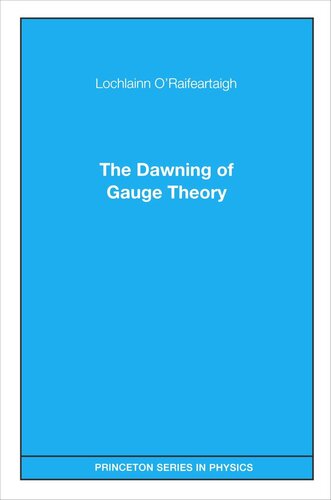

Most ebook files are in PDF format, so you can easily read them using various software such as Foxit Reader or directly on the Google Chrome browser.
Some ebook files are released by publishers in other formats such as .awz, .mobi, .epub, .fb2, etc. You may need to install specific software to read these formats on mobile/PC, such as Calibre.
Please read the tutorial at this link: https://ebookbell.com/faq
We offer FREE conversion to the popular formats you request; however, this may take some time. Therefore, right after payment, please email us, and we will try to provide the service as quickly as possible.
For some exceptional file formats or broken links (if any), please refrain from opening any disputes. Instead, email us first, and we will try to assist within a maximum of 6 hours.
EbookBell Team

5.0
58 reviewsDuring the course of this century, gauge invariance has slowly emerged from being an incidental symmetry of electromagnetism to being a fundamental geometrical principle underlying the four known fundamental physical interactions. The development has been in two stages. In the first stage (1916-1956) the geometrical significance of gauge-invariance gradually came to be appreciated and the original abelian gauge-invariance of electromagnetism was generalized to non-abelian gauge invariance. In the second stage (1960-1975) it was found that, contrary to first appearances, the non-abelian gauge-theories provided exactly the framework that was needed to describe the nuclear interactions (both weak and strong) and thus provided a universal framework for describing all known fundamental interactions. In this work, Lochlainn O'Raifeartaigh describes the former phase.
O'Raifeartaigh first illustrates how gravitational theory and quantum mechanics played crucial roles in the reassessment of gauge theory as a geometric principle and as a framework for describing both electromagnetism and gravitation. He then describes how the abelian electromagnetic gauge-theory was generalized to its present non-abelian form. The development is illustrated by including a selection of relevant articles, many of them appearing here for the first time in English, notably by Weyl, Schrodinger, Klein, and London in the pre-war years, and by Pauli, Shaw, Yang-Mills, and Utiyama after the war. The articles illustrate that the reassessment of gauge-theory, due in a large measure to Weyl, constituted a major philosophical as well as technical advance.